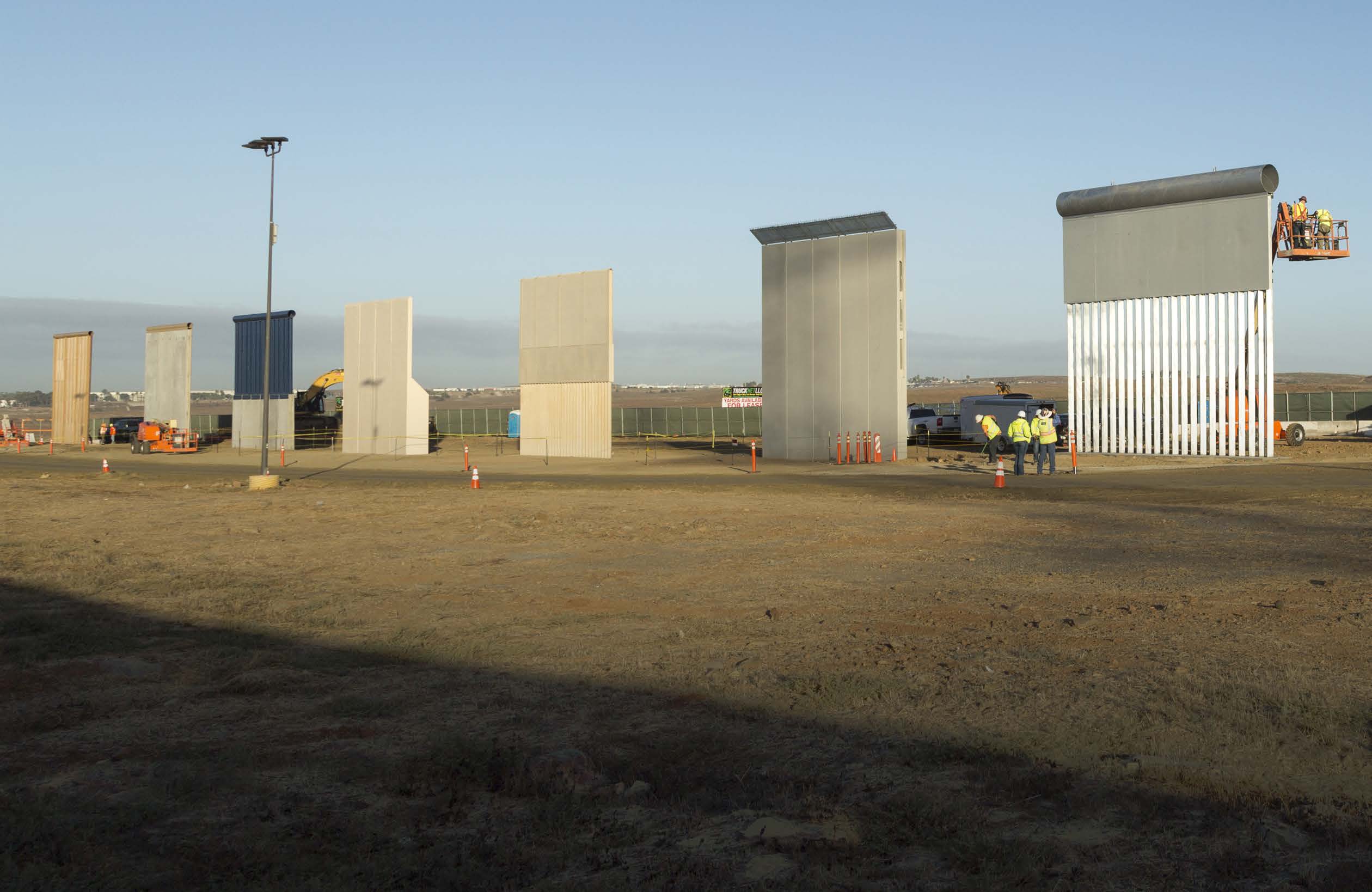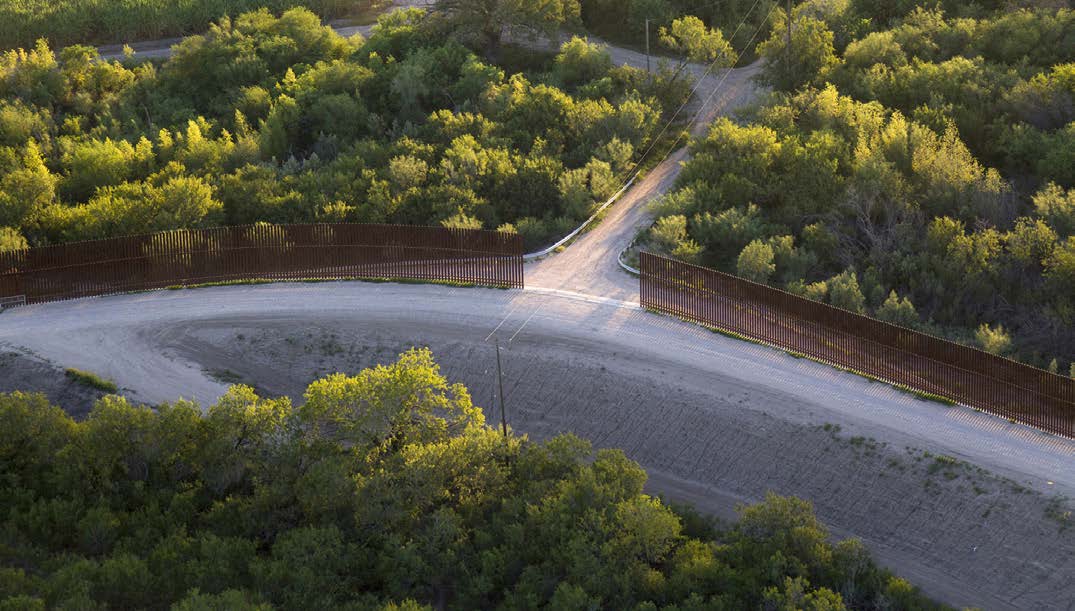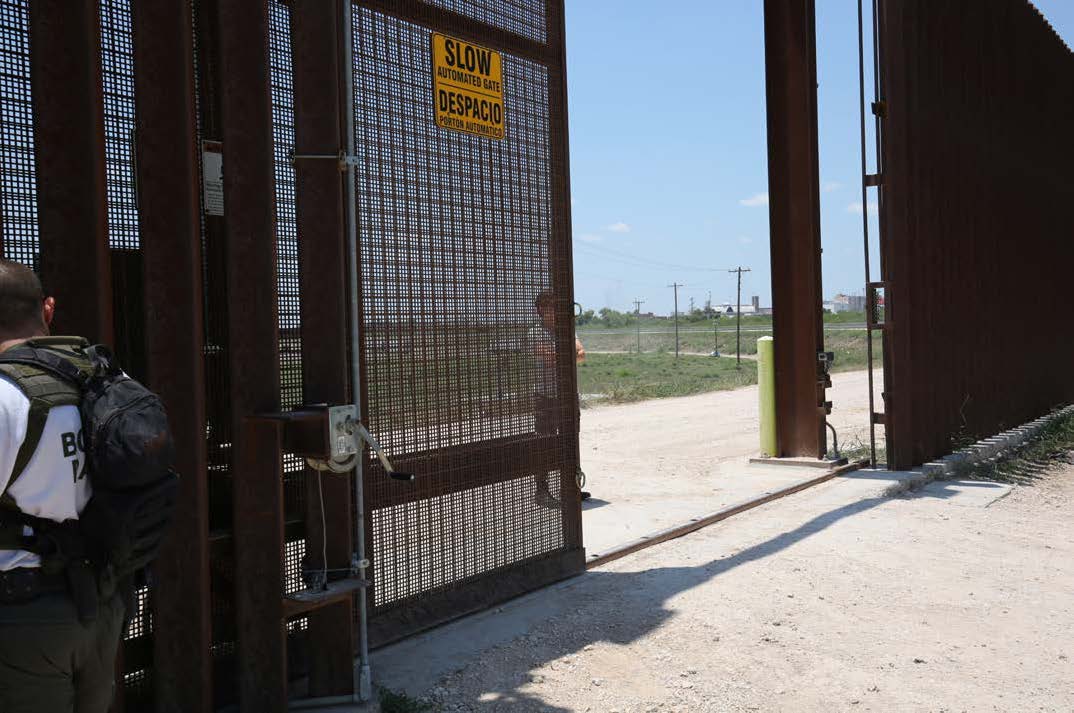
Construction Completed for Prototype Wall Designs

For the first time, the public got an up-close look at eight Southwest border wall prototypes when they were unveiled by CBP near San Diego in October. The event garnered coverage from more than 30 local and national media outlets. The prototypes range from 18 to 30-feet high.
Constructed with concrete and other materials, the structures will soon be tested for their resiliency to determine a final selection. CBP evaluators will use power and hand tools and methods criminals and those trying to slip through the border may use to penetrate the wall.
These prototypes will serve two important ends: to deter illegal border crossings and to allow CBP to evaluate the new wall designs for improvements in denying or impeding illegal entry. As the border security environment continues to evolve, CBP continues to refresh its border barrier design toolkit.
In order for wall prototype designs to be added to CBP’s existing toolkit, they must meet the Border Patrol’s operational requirements. “We’ll look at things like aesthetics, how penetrable they are, how resistant they are to tampering and then scaling or anti-climb features,” CBP Acting Deputy Commissioner Ronald D. Vitiello said during the announcement. CBP evaluators will use power and hand tools and other methods they expect transnational criminals to employ against the barrier.
Six vendors will construct the eight prototypes, with two companies building examples of both. These companies are Caddell Construction Co. of Montgomery, Alabama; KWR Construction of Sierra Vista, Arizona; ELTA North America Inc. of Annapolis Junction, Maryland; W. G. Yates & Sons Construction Company of Philadelphia, Mississippi; Fisher Sand & Gravel Co. of Tempe, Arizona; and Texas Sterling Construction Co. of Houston, Texas.
Border Patrol requirements
The designs were constructed to the Border Patrol’s requirements. “We look at things like aesthetics, how penetrable they are, how resistant they are to tampering and then scaling or anti-climb features,” CBP Acting Deputy Commissioner Ronald D. Vitiello said.
The border wall supports impedance and denial. A major factor in determining where investments in impedance and denial would be most effective is referred to as “vanishing time,” which is the distance between the border and the point at which an illegal border crosser could blend into the local populace. Vanishing times are often particularly short in urban areas, Blaine Sector Chief Jerry “Brian” Martin noted.
For fiscal year 2018, the Department of Homeland Security has requested $1.57 billion for wall projects covering approximately 74 miles along the Rio Grande Valley, Texas, and San Diego borders with Mexico. In Rio Grande Valley Sector, CBP would construct a border wall system that includes a concentrated combination of infrastructure such as wall, lighting, enforcement cameras, improved detection technology and all-weather roads. This system creates an enforcement zone, within which agents are able to safely patrol and maximize impedance and denial created by the border infrastructure.

Building the wall
While Congress considers funding for fiscal year 2018, other wall program activities are moving forward, such as planning and design, real estate, environmental activities, and upgrades along less fortified or outdated parts of the Southwest barrier. The fiscal year 2017 budget included $341 million for barrier replacement projects in the El Paso, San Diego, and El Centro Sectors. The funding also included 35 mechanical gates to close gaps in the existing infrastructure in Rio Grande Valley Sector.
In El Paso Sector, CBP will replace approximately 4 miles of primary pedestrian wall and approximately 20 miles of vehicle barrier. In addition, CBP will replace approximately 2 miles of primary pedestrian wall in El Centro Sector and approximately 14 miles of primary pedestrian wall in San Diego Sector using the steel bollard wall design.
A steel-bollard style wall provides significant impedance and denial capability. These are hollow steel beams that are filled with concrete and rebar. The space between the bollards satisfies a visibility requirement. “It’s important for our agents to see any adversary to the south,” said Martin.
Closing gaps
A few years ago, CBP installed 42 mechanical gates to start filling gaps in border barriers, left open to allow land owners access to their properties. Fiscal year 2017 funding covers the installation of approximately 35 more to be installed in the Rio Grande Valley Sector. Authorized users drive up to the gate and enter a code, which triggers a motor to draw back a moveable section of the barrier. This creates an opening to drive through. “Completing the remaining gates will help the Border Patrol tremendously” said Albert Herrera, assistant chief with the U.S. Border Patrol’s Operational Requirements Management Division.
Environmental considerations
CBP has been working closely with a host of federal, municipal, and local agencies, conducting biological and cultural surveys to determine how construction might impact animals, plants, and populations. “We will continue to be good stewards of the environment,” said Ntina Cooper, chief of staff for CBP’s Office of Facilities and Asset Management within Enterprise Services.
During construction in 2008, design changes were included to prevent disruption to species migration patterns, including ocelots, pronghorn antelope, and other migrating animals, said Cooper. Native vegetation was also nurtured to prevent erosion, along with other efforts conducted in coordination with the U.S. Department of the Interior to mitigate unavoidable impacts of barrier construction.
Barrier enhancements produce results
“I’ve seen [barrier] impacts and its effect on border security,” said Acting Deputy Commissioner Vitiello during a visit to the Laredo Sector. “I believe that it will help us do our work. It will help agents be better prepared and safer.”
For example, Vitiello stated that in 2005 Yuma Sector was “inundated with illegal cross-border incursions.” There were 138,549 illegal alien apprehensions, according to a CBP case study.
From 2006–2007, after adding 29 miles of primary pedestrian wall, 9.1 miles of lighting, 9 miles of all-weather roads, a bridge along the border, and 603 agents, Yuma Sector experienced an 82 percent decrease in illegal entries. In addition, Yuma saw a 95 percent decrease in agent assaults from fiscal year 2007 to fiscal year 2015, the study reports. Also during that time, methamphetamine seizures shot up more than 8,000 percent and heroin 39,554 percent.


